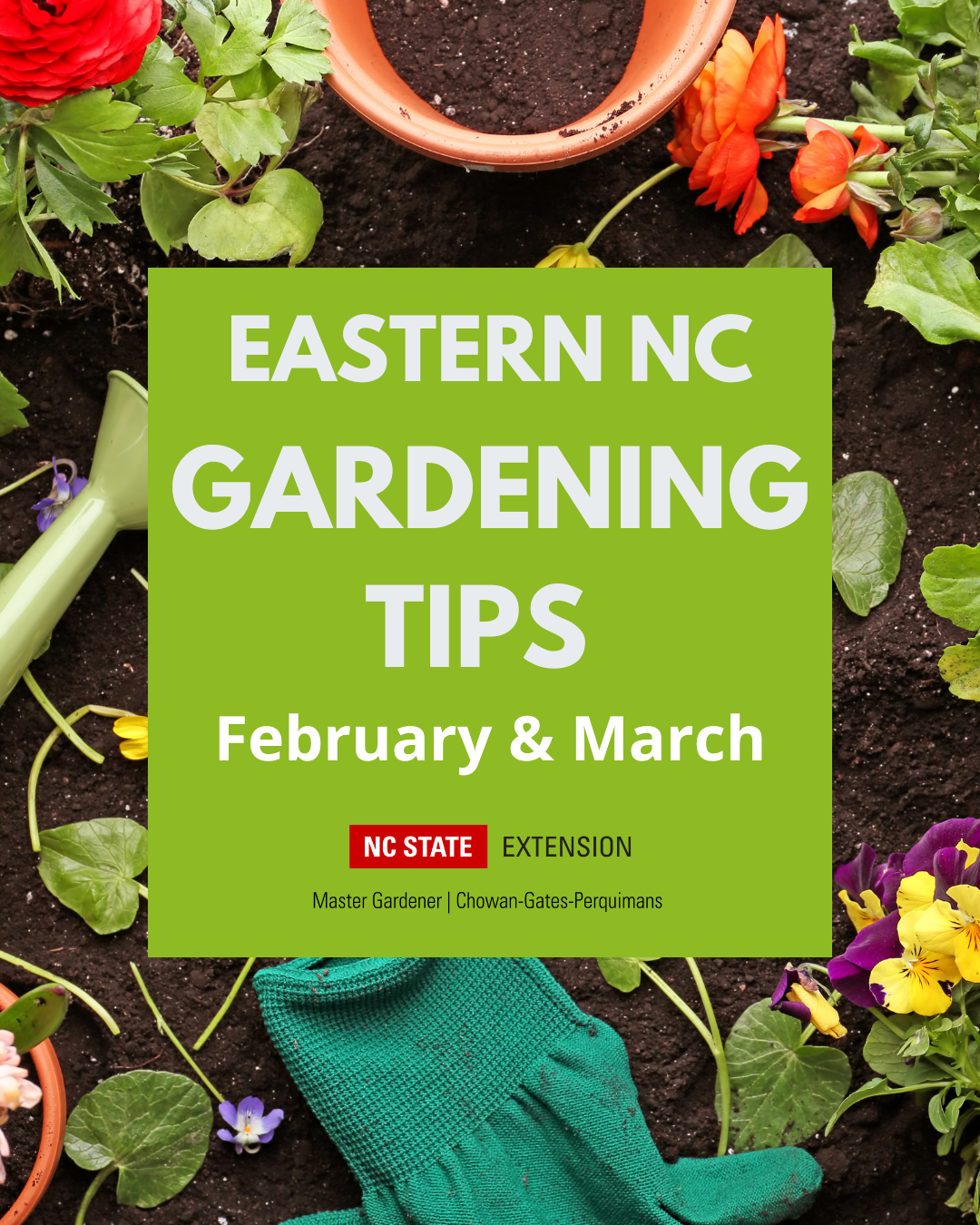March Towards Spring With These Gardening Tips!
go.ncsu.edu/readext?1055736
en Español / em Português
El inglés es el idioma de control de esta página. En la medida en que haya algún conflicto entre la traducción al inglés y la traducción, el inglés prevalece.
Al hacer clic en el enlace de traducción se activa un servicio de traducción gratuito para convertir la página al español. Al igual que con cualquier traducción por Internet, la conversión no es sensible al contexto y puede que no traduzca el texto en su significado original. NC State Extension no garantiza la exactitud del texto traducido. Por favor, tenga en cuenta que algunas aplicaciones y/o servicios pueden no funcionar como se espera cuando se traducen.
Português
Inglês é o idioma de controle desta página. Na medida que haja algum conflito entre o texto original em Inglês e a tradução, o Inglês prevalece.
Ao clicar no link de tradução, um serviço gratuito de tradução será ativado para converter a página para o Português. Como em qualquer tradução pela internet, a conversão não é sensivel ao contexto e pode não ocorrer a tradução para o significado orginal. O serviço de Extensão da Carolina do Norte (NC State Extension) não garante a exatidão do texto traduzido. Por favor, observe que algumas funções ou serviços podem não funcionar como esperado após a tradução.
English
English is the controlling language of this page. To the extent there is any conflict between the English text and the translation, English controls.
Clicking on the translation link activates a free translation service to convert the page to Spanish. As with any Internet translation, the conversion is not context-sensitive and may not translate the text to its original meaning. NC State Extension does not guarantee the accuracy of the translated text. Please note that some applications and/or services may not function as expected when translated.
Collapse ▲As we make our way towards the second half of February, it is important to start thinking about gardening tasks that need to be completed over the next few months. See some gardening tips below from Extension Master Gardener℠ Volunteer Intern, Annette Thompson.
March into Spring with Gardening Tips
- March is a good time to plan your flower garden. Annuals and perennials
can be started now from seeds for later planting. A great resource in
planning your flower garden is the Plant Toolbox, a site offered by NC State - Amaryllis can be moved outside to a permanent location after the last frost
(usually in April in easter NC) Choose a site in full sun to partial shade and
plant to a depth of 2-4 inches below the surface - Tree pruning can be done in February/early March if new growth has not
emerged - Fescue/Bluegrass can be seeded now, but be prepared to keep it well
watered during the hot summer months - Start planning your vegetable garden, remembering to rotate your crops
year to year. After the last freeze, tomatoes, peppers and eggplant can be
set out. When shopping for plants, choose plants that do not already have
blooms on them. Broccoli, cabbage, lettuce can be planted earlier
(Feb/Mar) - Fertilize winter annual like pansies and spring flowering bulbs (as leaves
emerge) now. Perennials can be fertilized as new growth emerges. Cool
season lawns may be fertilized as soil testing indicates. (Good time to get
those soil tests done) - Roses can be pruned in Feb/March. Fertilize roses after pruning and before
they leaf out - Divide and replant summer/fall flowering perennials as new growth
emerges. - Liriope can be trimmed back and divided at this time
- Start pulling weeds from the flower beds and lawns.
- General pruning of summer flowering plants, broadleaf evergreens, shrubs
and ornamental grasses can be done now
For more information about gardening tasks for this time of year or the Extension Master Gardener volunteer program, contact Kellie Binnicker at keluton@ncsu.edu.



